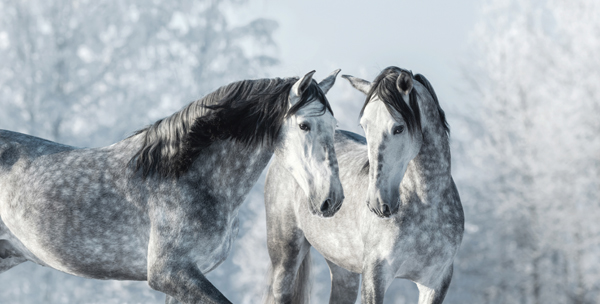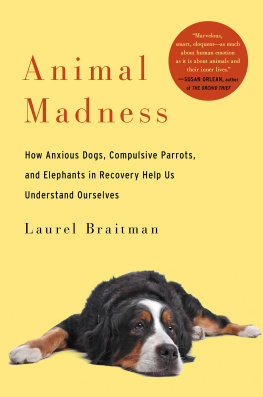Copyright 2017 Belinda Recio
All rights reserved. No part of this book may be reproduced in any manner without the express written consent of the publisher, except in the case of brief excerpts in critical reviews or articles. All inquiries should be addressed to Skyhorse Publishing, 307 West 36th Street, 11th Floor, New York, NY 10018.
Skyhorse Publishing books may be purchased in bulk at special discounts for sales promotion, corporate gifts, fund-raising, or educational purposes. Special editions can also be created to specifications. For details, contact the Special Sales Department, Skyhorse Publishing, 307 West 36th Street, 11th Floor, New York, NY 10018 or .
Skyhorse and Skyhorse Publishing are registered trademarks of Skyhorse Publishing, Inc., a Delaware corporation.
Visit our website at www.skyhorsepublishing.com.
10 9 8 7 6 5 4 3 2 1
Library of Congress Cataloging-in-Publication Data is available on file.
Cover design by Jane Sheppard
Cover photo credit: iStockphoto
Interior book design by Belinda Recio
Interior photo credit: iStockphoto, except where specified
Print ISBN: 9781510718944
Ebook ISBN: 9781510718951
Printed in China
Contents
The spirit wanders, comes now here, now there, and occupies whatever frame it pleases. From beasts it passes into human bodies, and from our bodies into beasts, but never perishes.
Ovid, Metamorphoses

Foreword
I often tell audiences that these are exciting times to be an ethologist (a specialist in animal behavior), for we are living in an unprecedented era of discovery of the inner lives of animals. I sometimes add, with some pride, that I may be the first person with the phrase Animal Sentience in their job title. (For the uninitiated, sentience is the capacity to feel.) Since 2014, I have been Director of Animal Sentience with the Washington, DC-based Humane Society Institute for Science and Policy.
It was in that role, in March 2014, that my colleagues and I staged a two-day conference in DC titled The Science of Animal Thinking and Emotion. The meeting brought together luminaries in the fields of ethology and sentience from North America and Europe. We learned about such things as tool use and cooperation by crocodiles, the flexible language of prairie dogs, and the way a dogs brain lights up when greeting her beloved guardian. That last example points to two other aspects of progress in our understanding and appreciation of animals experiences: 1) the advancement of technologies that allow us to explore previously inaccessible facets of animals inner worlds, and 2) approaches that treat animals as autonomous beings with preferences and moods, rather than as dumb things to be bent to the human will. The dogs used in Greg Bernss innovative research at Emory University are peoples companion animals, trained through positive reinforcement (read: food treats) to remain still in an fMRI (functional magnetic resonance imaging) machine. They participate voluntarily and they go home after a two-hour session in the lab.
Dogs happen to be the new darlings of animal cognition research, and one has to wonder why it has taken so long for scientists to focus on an animal with which we have such a strong affinity borne of thousands of years of cohabitation and communication. Within months of our conference, I had the opportunity to visit the Clever Dog Lab in Vienna, Austria, where I saw, among other methods, dogs learning to rest their chins on a padded platform so that their eye movements and tail positions could be monitored with highly sensitive cameras while they looked at various projected images and videos. Methods like this reveal that dogs glance first to the left when they look at a human face. Why do that, you may be wondering? Apparently, to get a useful quick read of our emotional state, which is better revealed on that side of our faces by our bilateral brains. We do the same thing when we glance at human faces, even though we, and most likely they, are not aware we are doing it. The chin-rest apparatus has also fostered the discovery that dogs wag their tails more to the left when they are feeling anxious, as when confronted with a photograph of an unfriendly looking, unfamiliar dog. That might be a useful bit of information for a dog who is about to move in for that sought-after sniff just below the tail.
Scientific fascination with animal thinking and feeling seems natural enough, but it represents a sea change, given that for much of the twentieth century the idea of animals having conscious minds was roundly rejected and deemed unsuitable for study.
Its one thing that scientists are getting on board with perceiving animals as they arethinking, feeling beings. But what about society? One needs look no further than the bookshelf. Since Jeffrey Moussaieff Masson and Susan McCarthy published the fabulously popular When Elephants Weep: The Emotional Lives of Animals, in 1995, the field has been expanding fast. In just the last two years, Beyond Words by Carl Safina, Soul of an Octopus by Sy Montgomery, The Genius of Birds by Jennifer Ackerman, Being a Dog by Alexandra Horowitz, Are We Smart Enough to Know How Smart Animals Are? by Frans de Waal, Voices of the Ocean (dolphins) by Susan Casey, The Hidden Lives of Owls by Leigh Calvez, and my own What a Fish Knows have all made the New York Times best-seller list.
It is my hope that the book you are now holding will also ignite the public imagination. The pace of new discoveries warrants new books to bring it to a hungry public that generally avoids the rarefied, jargon-steeped journals where this stuff first, and often only, gets published. Perhaps some animals dont need a public relations plug, but who wouldnt be surprised to learn that dolphins play with breaching humpback whales by riding up on the leviathans backs then sliding down or that young chimpanzees play games of make-believe? Other species badly need some good press, and so I was delighted to learn that rattlesnakes are more sociable than we thought and that they babysit the young of other rattlesnake moms. And that their cousins, the crocodilians, have recently been found to engage in joyous behaviors unbefitting their stereotype, including sliding down slopes, surfing on waves, and playing games of chase.
It is tempting to share more of these gems here, but better to let you uncover them yourself. Belinda Recio relates it all in crisp, informative vignettes accompanied with photographs, and an occasional touch of humor.
I leave you with one caution as you read this book, and others that celebrate the mental faculties of our animal brethren: we should be mindful not to attach too much importance to animal intelligence. What matters most is that animals feel, and that they experience their lives no less intensely than we do ours. Nor should we think of humans as the pinnacle against which all others are measured. Belinda Recio clearly knows this, and many of her examples reminded me of the folly of this thinking. As Henry Beston so beautifully expressed in his immortal characterization of animals as other nations, it is not just when we recognize how they may resemble us, but in how they differ from us in their approaches to life that our own hearts and minds may be most uplifted.
Jonathan Balcombe
Acknowledgments
I am profoundly indebted to all the scientists, animal caregivers, and animal advocacy organizations whose research, observations, and humane education programs inspired this book and are changing how we understand and treat animals.












